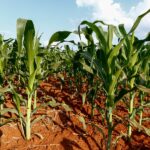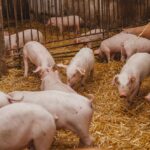Variable Rate Technology (VRT) in precision agriculture refers to the application of inputs (such as fertilizers, pesticides, and water) in varying amounts across a field based on site-specific conditions. It involves using advanced technologies like GPS, sensors, and mapping software to create prescription maps and adjust input application rates accordingly. Here are some benefits of using Variable Rate Technology in precision agriculture:
- Improved Efficiency: VRT enables farmers to apply inputs precisely where they are needed, optimizing their usage. By tailoring the application rates to specific areas of a field, farmers can avoid over-applying inputs to unproductive areas while ensuring adequate supply to areas with high yield potential. This improves the overall efficiency of input use, reducing waste and lowering production costs.
- Increased Yield and Profitability: By optimizing input application rates, VRT helps maximize crop yields. It ensures that crops receive the right amount of nutrients, water, and other inputs at the right time, promoting healthier plant growth and development. Higher yields translate to increased profitability for farmers.
- Environmental Sustainability: VRT plays a crucial role in promoting sustainable agriculture. By applying inputs in a targeted manner, farmers can minimize the risk of nutrient runoff and leaching, reducing water pollution and protecting the environment. VRT also helps in reducing the overall usage of fertilizers, pesticides, and other chemicals, leading to a more sustainable and environmentally friendly farming system.
- Precise Field Management: VRT allows farmers to identify and manage field variability effectively. By collecting and analyzing data on soil composition, moisture levels, crop health, and other parameters, farmers can generate prescription maps that guide input application. This precision in field management helps address variations in soil fertility, pests, diseases, and other factors, resulting in more uniform crop growth and improved field productivity.
- Data-Driven Decision Making: VRT relies on data collection, analysis, and interpretation to make informed decisions. By utilizing sensor technology and collecting field data, farmers can gain valuable insights into the performance of their crops and make data-driven decisions regarding input application, planting, harvesting, and other agronomic practices. This enables continuous improvement and optimization of farming operations.
- Increased Sustainability of Resources: VRT aids in the sustainable use of resources such as water and energy. By applying water precisely where it is needed, farmers can reduce water waste and ensure efficient irrigation. Similarly, VRT helps optimize the use of energy by reducing unnecessary machinery operations and minimizing input application in non-productive areas.
- Adaptation to Field Variability: Fields often exhibit significant variability in soil composition, topography, and other characteristics. VRT allows farmers to adapt their management practices accordingly. By creating prescription maps based on field data, farmers can vary input rates to match the specific needs of different areas within a field, resulting in more consistent crop growth and better overall field performance.
Variable Rate Technology in precision agriculture offers numerous benefits, including improved efficiency, increased yield and profitability, environmental sustainability, precise field management, data-driven decision making, resource sustainability, and adaptation to field variability. By leveraging advanced technologies and site-specific information, farmers can optimize their farming practices and achieve better outcomes.
Join 'Farmers Mag' WhatsApp Channel
Get the latest Farming news and tips delivered straight to your WhatsApp
CLICK HERE TO JOIN






